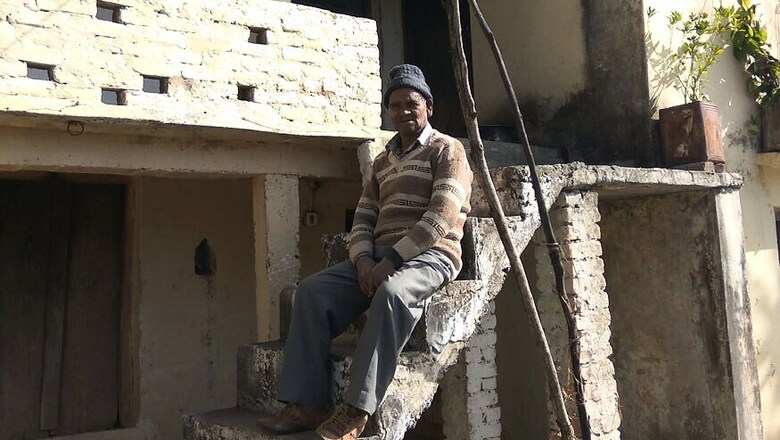
views
Baluni: No one lives in Baluni village of Uttarakhand’s Pauri Garwhal district. Except, Naik (retd) Shyam Prasad Baluni, a 1971 war veteran from the Bengal Sappers.
In the last 18 years everyone has left him. One by one. First his neighbours. And then his own family members.
Shyam's wife passed away before Uttarakhand was carved out of UP in 2000. Over the years, his daughters have got married. His only son joined Bengal Engineers five years back.
But Shyam refuses to move out of his double-storied house in the middle of the village, 35 km from district headquarters in Pauri, Uttarakhand.
“This wall was damaged by a bear who sought dinner in a bee hive next door. He had his feast, but brought down this wall,” he says.
The nearest hamlet and habitation from Baluni village is a steep 3 km climb up a ridge. Through terraced fields, the village path is hardly discernible through brambles and nettles. A fertile land that would have once fed and sustained over a dozen families is a fallow stretch of lantanas.
Welcome to the ghost villages of Uttarakhand. Where no one lives anymore.
“The problem started two decades back, when the water spring near our village dried up. The piped water is still not available here after all these years. And slowly people started to migrate. In search of employment or some for a better living conditions,” Shyam said.
Five years back, he wrote to the then President Pratibha Patil seeking access to potable water. Or else he threatened to take his own life. But nothing came of it. Nothing in all these years. His plea was reduced to a few columns in the local newspapers.
There are 331 such ghost villages in Pauri District alone where the entire population has migrated to the tarai plains or big cities far off in search of employment.
Similarly in Kumaon, Almora is the worst affected district. The proponents of the statehood movement in mid-ninetees saw the hill state as some sort of a panacea. The argument then was that the hill divisions of the undivided UP lagged behind in development for the powers that be in faraway Lucknow did not care for the region.
Uma Charan Barthwal, an activist since his school days recalls the euphoria. "We shouted slogans on the streets and insisted we want the state today and we want it now," Barthwal said.
In retrospect, he concurs with what his grandfather told him then that" Uttarakhand for some years should have been a union territory".
Since its formation, BJP and Congress have in turn ruled Uttarakhand. The state has had seven chief ministers in 16 years. That's one every two and a half years. Only veteran ND Tiwari could complete his full five year tenure.
The demographic shift got reflected in the last delimitation. Hills were left poorer by seven seats. "At this rate after the next delimitation, the tarai plains and bhabhar will have more constituencies than hills,” says Rattan Singh Aswal who is associated with a non-government organization, Palayan Ek Chintan.
Even netas from both Kumaon and Gharwal have followed the people to the tarai plains. Tiwari contested and won from Ramnagar. B C Khanduri chose to contest Kotdwar in 2012. Ramesh Pokhariyal Nishak shifted to Doiwala in Dehradun. And Harish Rawat this time is contesting from two seats, Kicha and Haridwar Rural. Both are in the tarai plains.
"I have even contested and won from Dharchula in remote Pithoragarh district. As the CM I can contest and seek mandate from other constituencies as well,” says Rawat.
Both parties in these elections are trying to lure the youth. Congress has promised Rs 2500 unemployment dole. BJP in its manifesto makes promises to generate resources to curb migration.
On my way back, I ask Shyam about these promises. He points out at a soil remover cutting a road to his village that would connect him to the main highway to Pauri.
This is how we have developed the hills, he says.




















Comments
0 comment